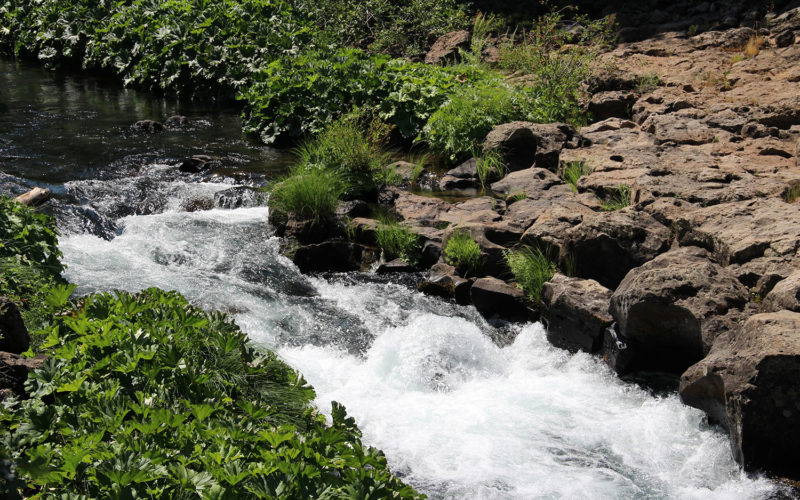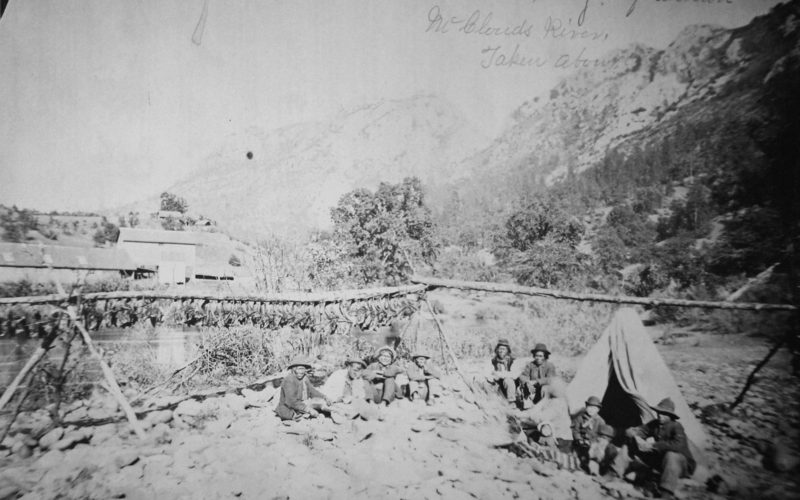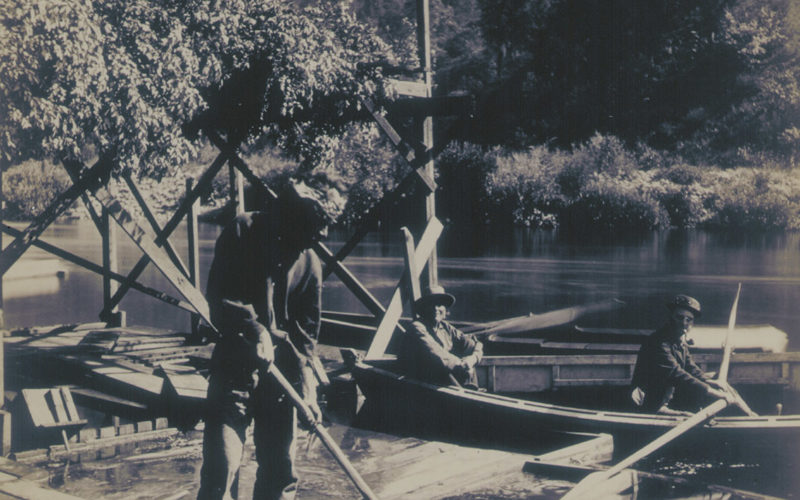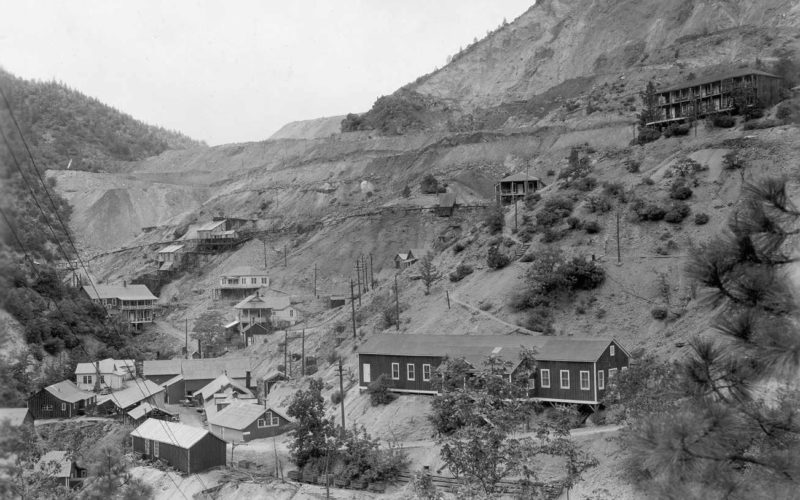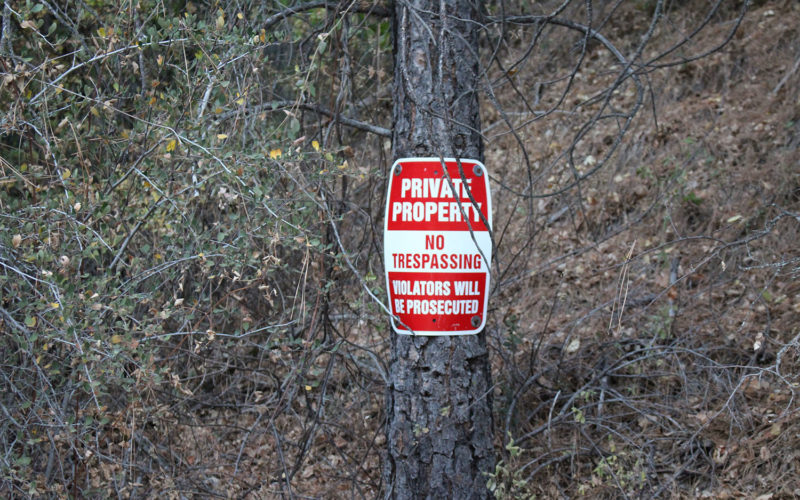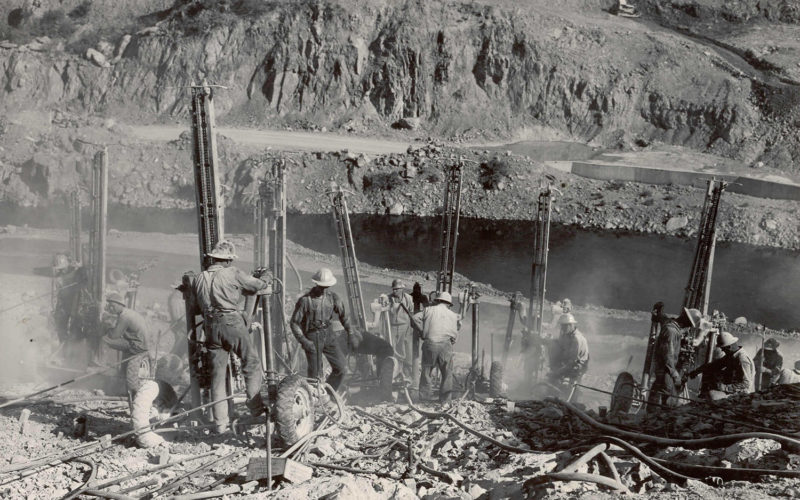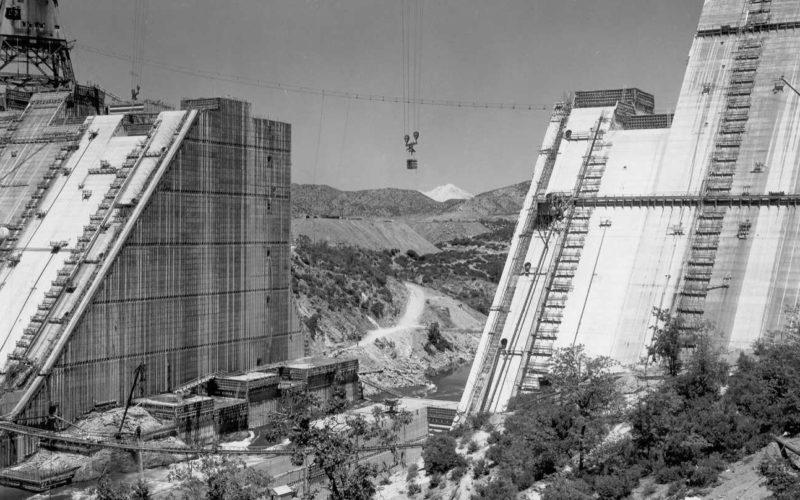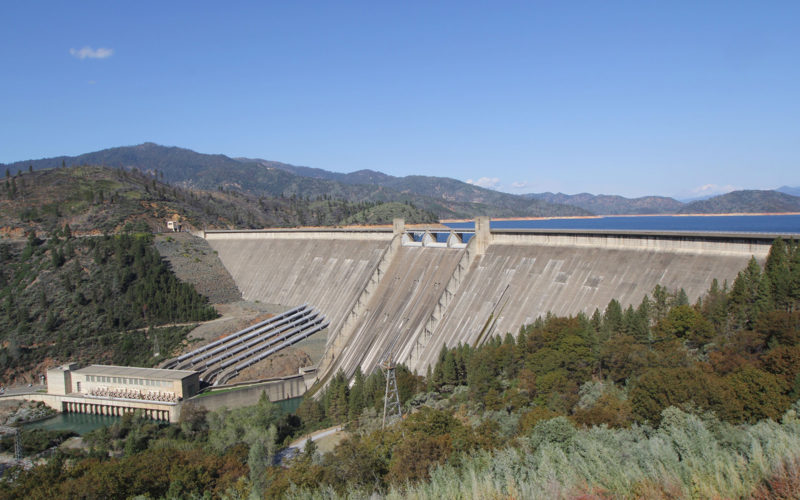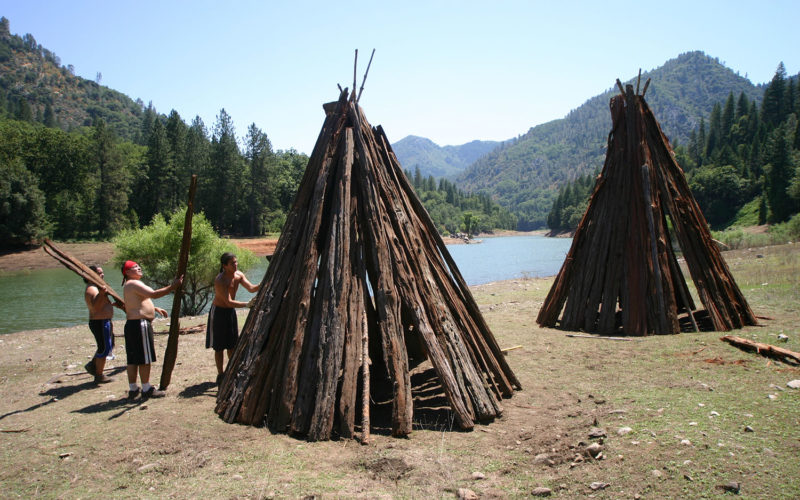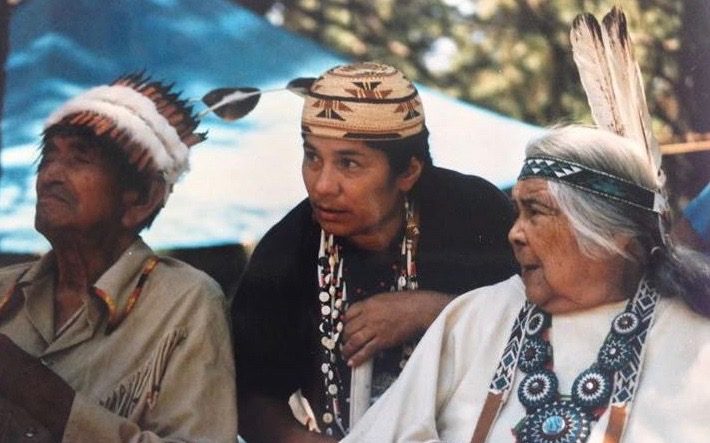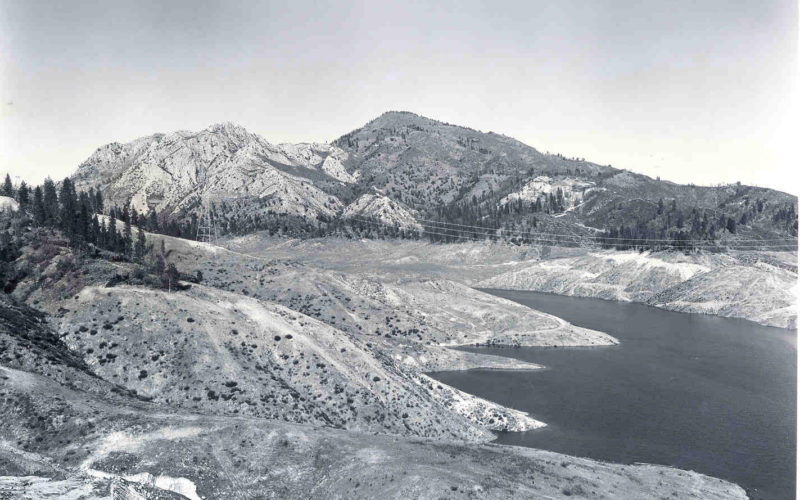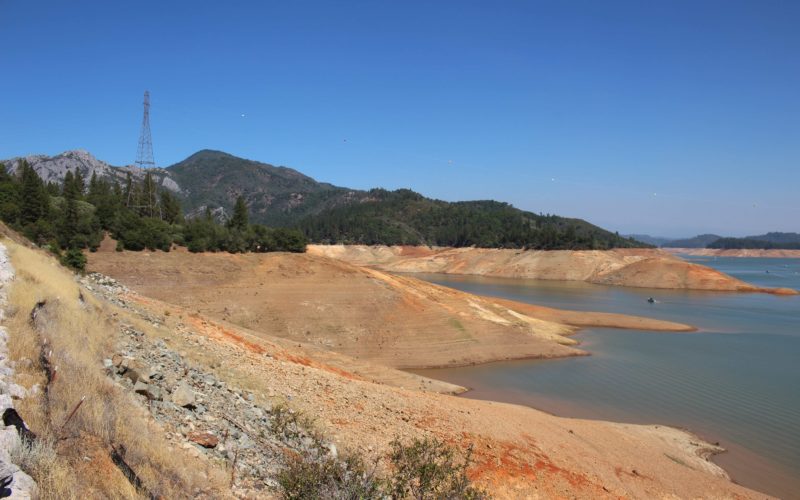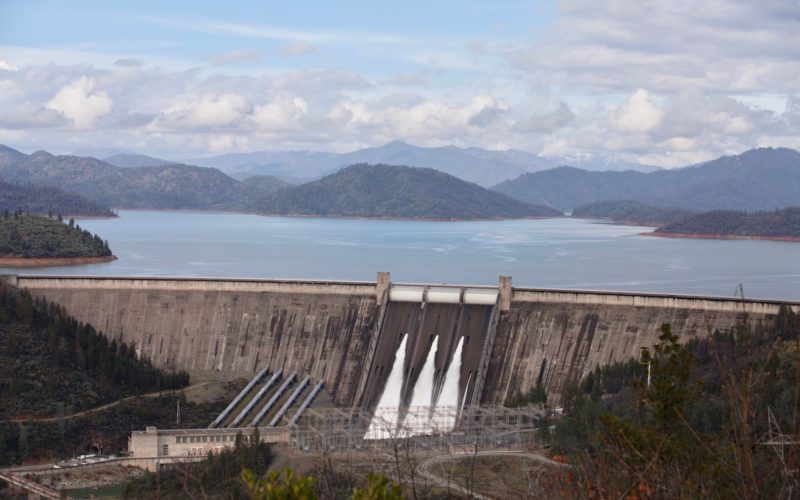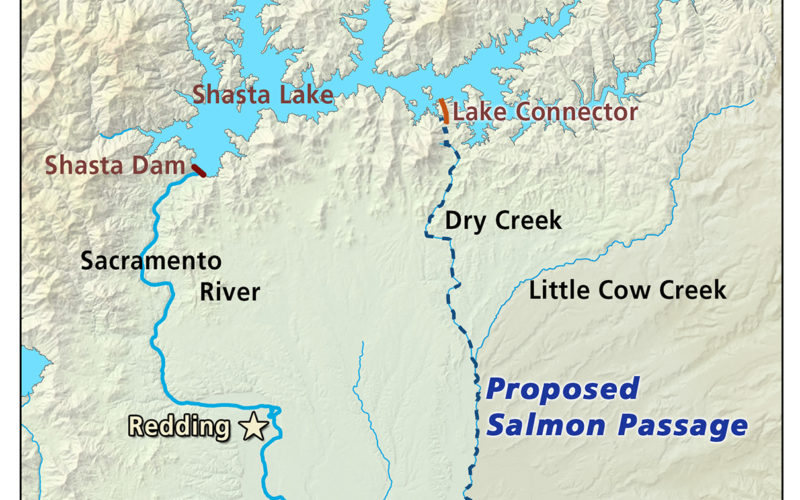MENU
McCloud river Salmon History
Standards: HSS 4.4; CCSS RI 4.3, SL 4.2, SL 4.3, W4.2, W4.8, W4.9
Objective
Students will learn how the arrival of newcomers impacted the Winnemem Wintu and the McCloud River salmon.
Materials
- Run4Salmon Slideshow Part 2 (below)
- Teacher Background Information and Links (provided below)
- Dancing Salmon Home Video Clip Fish Hatchery on the McCloud (5:22)
- “History of McCloud River Chinook Salmon” text to display or copy for students
- Students’ California Watershed Maps
Estimated time
1-2 class sessions
Slideshow Part 2: The Winnemem and the newcomers
Click on the slide box below to view in full screen mode
Also available: PDF copy of the slideshow script for teachers to print and read.
Background Information/Primary Sources for Teacher
- Dancing Salmon Home Video Clip Gold Rush to California Statehood (7:02) (Student Viewing Optional)
- Text Resource:
Early in the history of the state of California, a law protected salmon runs from human-caused losses.
"1852—California enacted the first salmon law and included a closed season on some kinds of game. It called upon all citizens and officers of justice to remove, destroy, and break down any weir, dam, fence, set or stop net, or other obstruction to the run of salmon in any river or stream."
—Fish Bulletin 150, A History of California’s Fish Hatcheries 1870-1960, by Earl Leitritz, written in 1970; State Dept. of Fish and GameThe following is a passage from Livingston Stone on how the McCloud River was not degraded when he arrived. Students can look up the source material, Long Time Past: Baird Station and the McCloud Wintu:
“The miner’s pick and shovel have upturned the banks of other rivers, or the farms of white men have stretched along their waters, but, for some reason or other, the civilized races have very singularly left the McCloud River to its aboriginal inhabitants. The consequence is, that the McCloud River presents an instance of what is becoming extremely rare,… namely, a region which is just as it was before the white man found it, and a race of aborigines, whose simple habits have not been corrupted by the aggressive influence of communication with the whites (Stone 1874:177).
Livingston Stone passage on the Winnemem Wintu, 1874:
…the last of the California Indians to yield to the encroachments of civilization… they have no malice naturally in their hearts toward any one, and will not injure anyone who does not first injure them… I would trust the McCloud Indians with anything.
“The McCloud Indians live and sleep in the open air in the summer. In the rainy season they build wigwams [“Wigwam” is an incorrect term, referring to houses built by Native Americans in the Northeastern U.S.] or huts of drift-wood and dry logs, which they inhabit pretty comfortably through the winter. In the summer and fall they live mainly on the salmon and trout which they spear. In the winter they live on the salmon which they catch and dry in the fall, and on acorns, which they gather in great quantities in the woods. They hunt with bows and arrows, with which they occasionally kill a bear, though a few of the more enterprising have rifles. They trap a very little, but the salmon of the river are so abundant that they are not obliged to resort to hunting and trapping at all, and do not do much of either.
Another passage from Long Time Past: Baird Station and the McCloud Wintu:
Notably, one visitor reported witnessing, in the summer of 1879, a salmon-related ceremonial dance at a Wintu village. We learned that the dance and gathering was an annual meeting, partly religious, and that it is given as an expression of gratitude for the return of the salmon to the river (Redding 1880:564).
- Further Information for Teachers:
Activities
Activity 1: Newcomers on the McCloud
Show Run4Salmon Slideshow Part 2, reading aloud the presenter notes included in the slideshow.
Activity 2: (Optional): Gold Rush to California Statehood Video Clip
Watch the Gold Rush to California Statehood video (7:02).
Activity 3: Fish Hatchery Video Clip
Show Fish Hatchery on the McCloud video clip (5:22)
Activity 4: Read Excerpt (below)

In 1872, a biologist named Livingston Stone set up a fish hatchery on the McCloud River. The Winnemem tried to protect their sacred fish and primary source of food, and they protested the government agent’s intention to take salmon by holding a “war dance” in 1873. Stone only wanted salmon eggs, in order to establish fisheries across the United States and in foreign countries. The Winnemem found ways to cooperate with him. Helped by Winnemem workers, the hatchery exported fertile salmon eggs. Most of the places where agents tried to establish salmon runs were not suitable, and efforts failed—except in a cold river in New Zealand, the Rakaia River.

Railroad construction in the 1880s involving dynamite explosions in the Sacramento River canyon stopped the salmon from returning up to the McCloud. For five years, the hatchery closed. Eventually the salmon population recovered, but fifty years later, dam building prevented any salmon from completing their migration to high elevation spawning grounds.
Today, the Sacramento River winter-run Chinook salmon are classified as endangered under the Endangered Species Act and the California Endangered Species Act. Under these laws, the government has the responsibility to take action to protect a species in danger of extinction.
The Winnemem Wintu Tribe has proposed relocating Chinook salmon from the Rakaia River in New Zealand to the Sacramento and McCloud Rivers. The Rakaia River salmon are descended from the fertilized eggs sent from the McCloud River more than a hundred years ago by Livingston Stone.
In order to reach the cold waters of the upper McCloud River, a swimway would have to be constructed around the massive Shasta Dam to allow the relocated fish to once again spawn in the river where they originally thrived.
In addition to the obstacles from dams, threats to California salmon runs include habitat degradation, water diversions, giant pumps in the Delta which degrade the estuary vital to the salmon life cycle, and pollution. Warmer river temperatures affecting salmon are caused by reservoir storage, water diversions and climate change. Salmon fishing seasons are limited to try to prevent overfishing.
Activity 5: Analysis
Use a graphic organizer to review the text and map the following:
- What events and obstacles have caused the Chinook salmon to disappear along the McCloud River?
- Which obstacles remain a problem today?
- What are some of the proposed solutions?
Activity 6: Informative Writing
Use the graphic organizer to write a second paragraph identifying the problems facing the McCloud River Chinook salmon and possible solutions. (This can be added to the first writing activity for a multiple paragraph composition to be completed in Lesson 6).
Activity 7: Compare Maps
Check the location and status of the event at (http://www.run4salmon.org/)
- Students mark the progress on their California Watershed maps
- How many miles have been covered from the start to the run’s current location?
